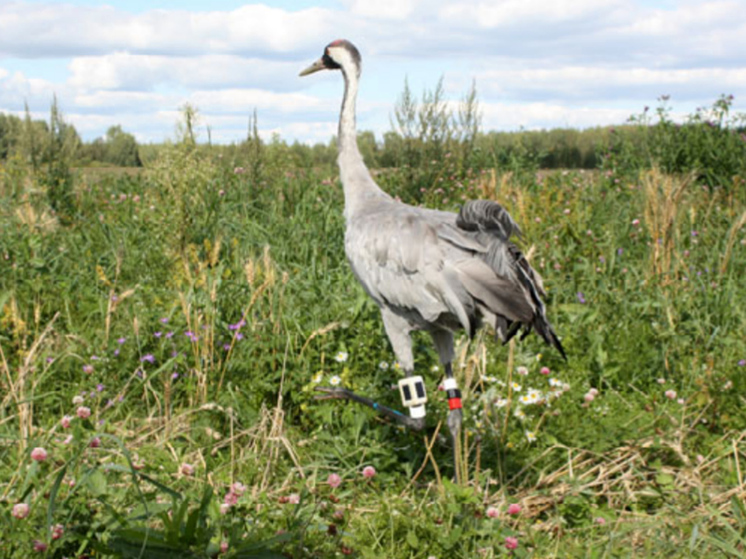It was possible to track their path using GPS trackers
Two gray cranes from the Moscow region chose the Hula Valley in Israel for wintering. It was possible to track this thanks to the fact that shortly before departure, ornithologists tagged the birds with GPS/GSM trackers.
 Photo: ROSIP and IPEE RAS
Photo: ROSIP and IPEE RAS
As MK managed to find out, two gray cranes from the Moscow region were named Dubna and Hotcha — after the names of the main rivers flowing through the territory of the Crane Region natural park. This fall, specialists carried out work on tagging birds as part of a joint project of the Institute of Ecology and Evolution named after. A.N. Severtsov RAS and IOO “Russian Society for the Conservation and Study of Birds named after. M.A. Menzbier.» The cranes were caught under a permit issued by the Ministry of Ecology and Natural Resources.
According to experts, both cranes marked with trackers turned out to be single.
Perhaps the reason lies in their youth: they simply did not have time to find their loved ones. But there is a possibility that the birds may have lost partners during the mass die-off of cranes in recent years. So, in 2021-2022. An outbreak of bird flu was recorded during the wintering of cranes in the Hula Valley. And in 2021 in the Askania-Nova Nature Reserve in the Kherson region and in 2022 in the Stavropol Territory, many cranes were poisoned by rodenticides.
Autumn in the Moscow region this year turned out to be abnormally warm, so many cranes started migrating quite late. Experts tracked that Hotcha flew away on the afternoon of October 10th. Already on October 13, he arrived for the winter in the Agamon Hula Nature Reserve in Israel. Dubna left his native land a little later, on October 11. However, this crane's path was different from its feathered neighbor. Almost every night he made stops, feeding the next day in the fields adjacent to his roosting areas. And only by October 18, Dubna reached Central Turkey. There he stopped for a long rest in the fields of the Sultan Swamps National Park, where he stayed until October 29. And now the tracker has shown that this crane also flew to Israel and stayed for the winter in the Hula Valley.
By the way, in 2018, in the “Crane Homeland” reserve, specialists tagged a baby Ryzhik crane. Then, from a GPS transmitter attached to his leg, valuable information was obtained about the migration and wintering of Moscow region birds in a national park in Israel. The following year, Ryzhik returned to Russia.
The gray crane is included in the Red Book of the Moscow Region and is a rare nesting species. Today in the Moscow region there are three large breeding groups of these birds with a total number of 150-170 pairs.























































Свежие комментарии